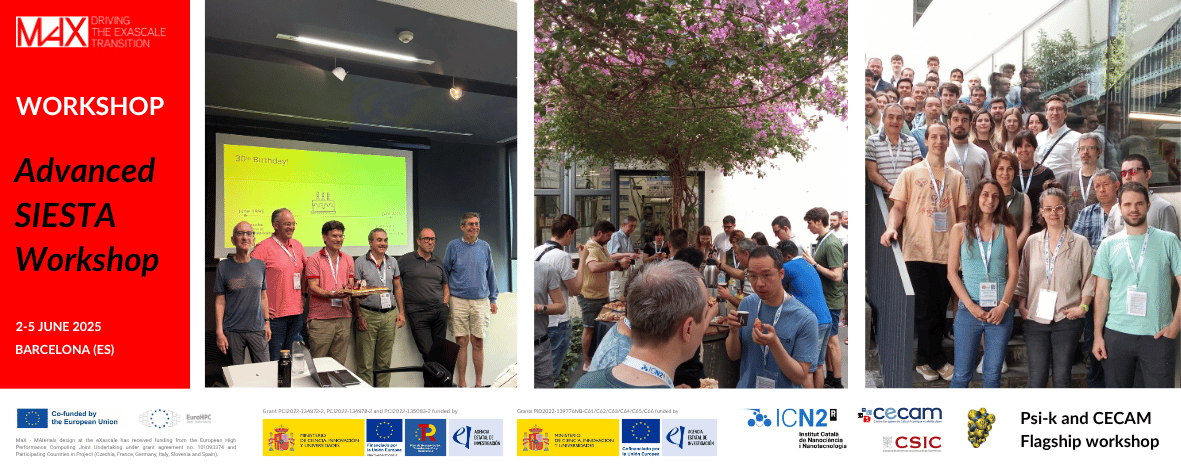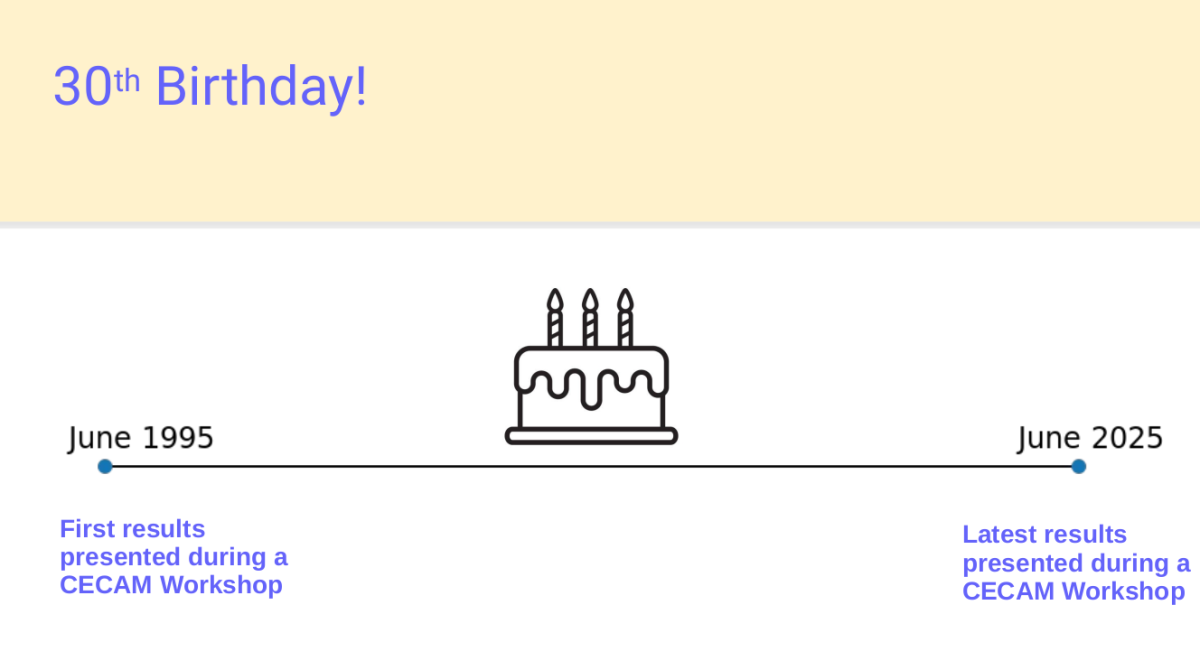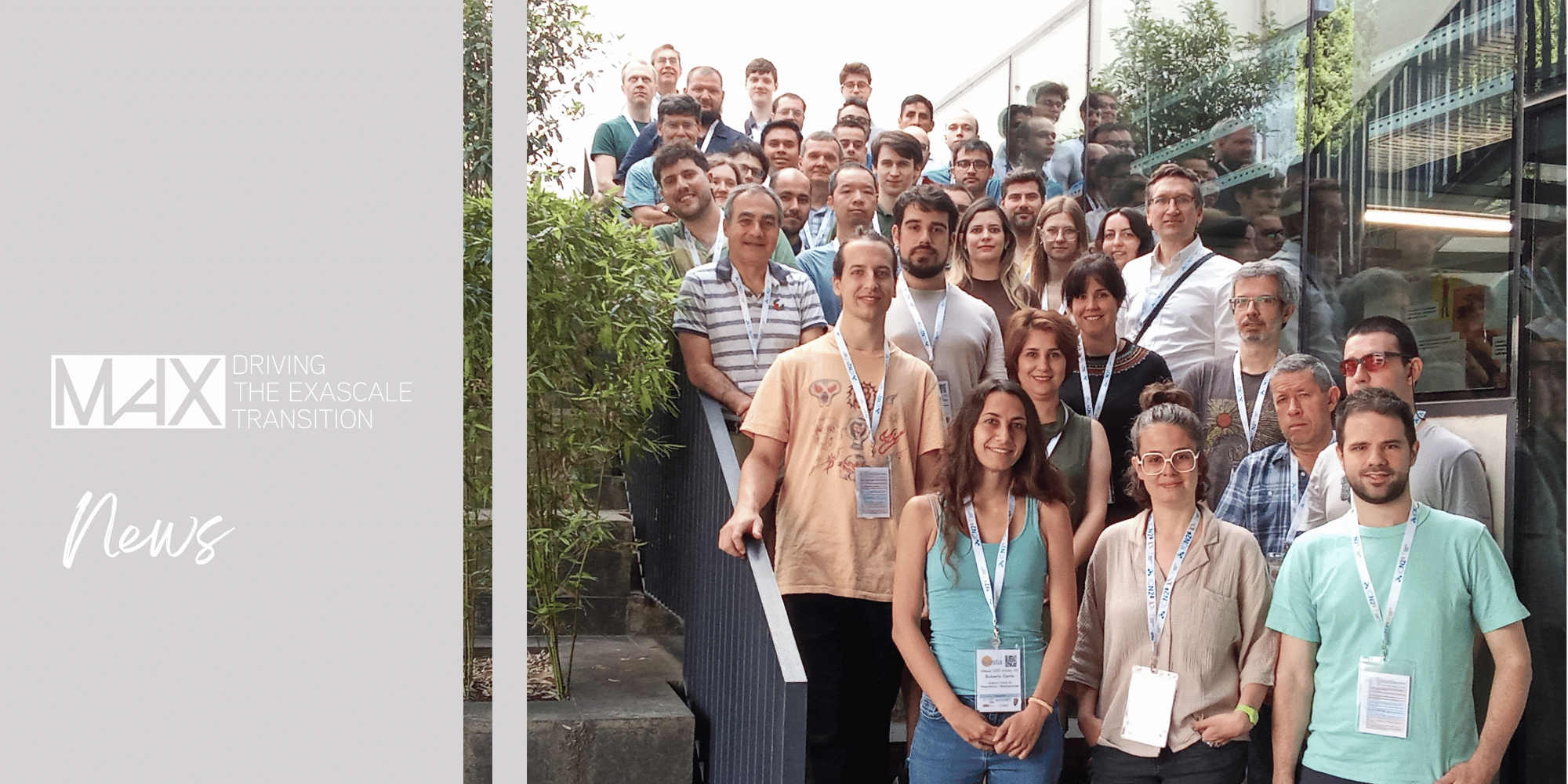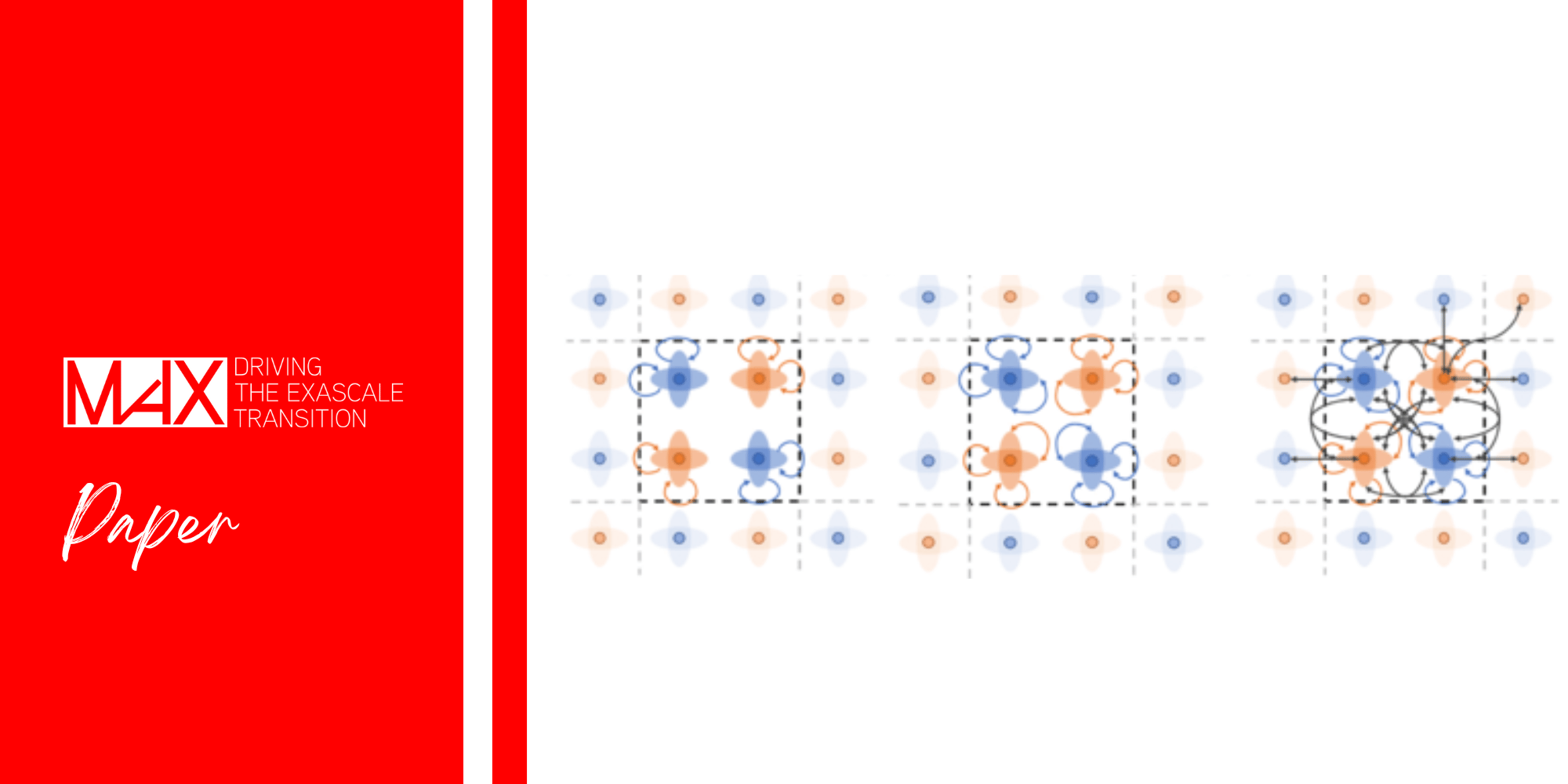SIESTA Project Celebrates 30th Anniversary with a Surprise Tribute
This year marks the 30th anniversary of the SIESTA project. To commemorate the occasion, a surprise celebration was organized during the SIESTA Advanced Workshop, paying tribute to the project’s origins and its founding members.

(on the left) The "Siesters" - from left to right, José Soler, Javier Junquera, Alberto García, Daniel Sánchez-Portal, Pablo Ordejón, Emilio Artacho.
A surprise celebration was organized during the SIESTA Advanced Workshop to pay tribute to the SIESTA project, its origins, and founding members. The idea came from a group of organizers and participants who wanted to honor the first generation of developers. The small celebration featured a look back at some of the key milestones in the rich history of the SIESTA code.
Founding members Pablo Ordejón (ICN2), Emilio Artacho (NANOGUNE), José Soler (UAM), Javier Junquera (University of Cantabria), Alberto García (ICMAB), and Daniel Sánchez-Portal (CSIC), were present for the tribute.
- Emilio, speaking after the event, reflected: “The SIESTA adventure has always been a story of generosity and friendship, and I am extremely grateful for it. It is very fitting to celebrate its thirty years during an event focused on novel developments led by a younger generation of engaged and advanced users, evidence of an engaging and growing community.”
- Pablo shared similar sentiments: “To me, SIESTA means 30 years forging science, collaboration, and friendship.”
- José, first author of SIESTA’s most influential paper, was also recognized for proposing the project’s name and designing its logo. The team was later expanded to include Alberto García (ICMAB), Daniel Sánchez-Portal (CSIC-UPV/EHU), and Javier Junquera (University of Cantabria).
- Reflecting on his experience, Daniel said: “What I enjoyed the most about collaborating on the SIESTA project was the opportunity to help democratize access to first-principles simulations, contributing to a code that is freely distributed and does not require large computational resources.”
- Javier added: “SIESTA is a great example of cutting-edge science made in Spain for the whole world.”
- Alberto, now the lead maintainer of the code, also shared his thoughts during the celebration: “I joined the project to contribute a little expertise in pseudopotentials, coming from a background in plane-wave codes. One can really say that is history!”
The surprise event was thoughtfully organized by Roberta Farris, José Ángel Silva, and Federico Pedrón from ICN2.
- Roberta, who gave a historical overview of the project, shared her feelings afterward: “It was amazing to see how the project began. We’re so used to thinking of SIESTA as a widely known and powerful code, but hearing the founders’ stories and realizing how hard it must have been to build it from scratch was truly inspiring.”

Milestones of the SIESTA Project:
- 1993: Pablo Ordejón, with Richard Martin, presented a linear scaling functional at the APS March Meeting in Seattle.
- 1995: The SIESTA method was born (though not yet named) at Espresso Royale, Urbana, IL (USA).
- June 1995: First results presented at a CECAM Workshop.
- 1996: First published paper: Ordejón P., Artacho E., and Soler J., Phys. Rev. B, 53, 16 (1996).
- 2002: "The SIESTA paper is out" — The SIESTA method for ab initio order-N materials simulation, Journal of Physics: Condensed Matter 14 (11), 2745. Today, it has gathered more than 14,000 citations.
- June 2025: The latest advances with the SIESTA method presented at a CECAM Workshop.
About SIESTA
SIESTA is a widely used open-source code for first-principles simulations based on density functional theory. Designed for efficiency and scalability, SIESTA enables researchers to simulate complex materials and interfaces with thousands of atoms. Its rich ecosystem of interfaces and compatibility with machine learning tools ensures its continued role in cutting-edge materials science.



